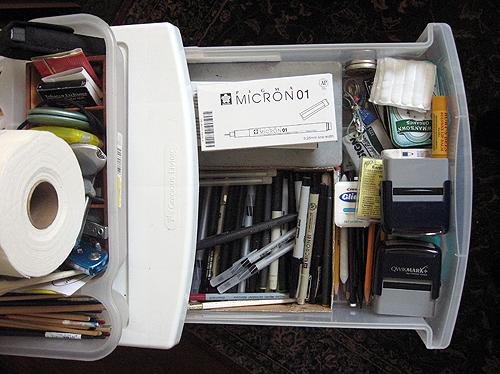 The Pen Drawer.
The Pen Drawer.
Oh, pens, how I love each and every one of you. Below are some of my favorites.
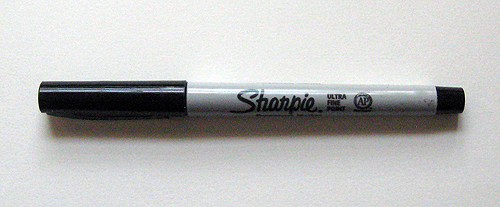
The Old Standby: Sharpie Ultra-Fine Point. Pros: Long-lasting as long as they stay capped between uses. Writes on a variety of porous and non-porous surfaces. Inexpensive and easy to find in bulk. Very durable tip, will stand up to quite a bit of abuse. Decent color selection. Cons: Smelly. Bleeds on paper. They will write on top of acrylic paint, but as the ink is solvent-based, the acrylic will dissolve and clog the pen tip. This solvent will also make paper turn yellow after a few weeks, sooner if the drawing is exposed to air and sun.
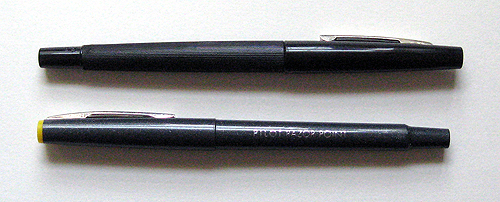
My water-based friends: Pilot Razor Point and the Papermate Flair black felt tip pens.
Pros: Very durable. Both deliver black lines with reliably uniform thickness. Easy to find at office supply stores. Good for ink wash drawings (this one was made with the aid of a Niji Waterbrush). I also use them to write down loud thoughts. Cons: They only write on porous surfaces, not good for mixed-media work. Limited range of colors available.
Not So Much: the Faber-Castell Pitt Artist Pen and Staedtler Pigment Liner. I tried these while in search of alternatives to the Pigma Micron (why, I can't remember). Pros: Archival ink. Durable tips. Waterproof, writes on a variety of surfaces. The Faber-Castell pens come in Sepia, which is not bad, but the ink is almost indistinguishable from black. Cons: Both pens are fairly expensive for felt tips. I find the tips, for all their durability, are not flexible enough to produce satisfying lines, especially with the larger sizes.
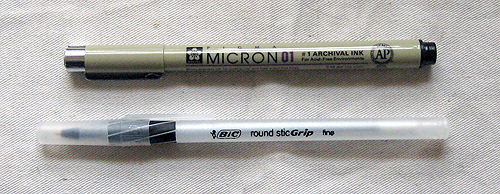
The Champs: Pigma Micron 01 and Bic Round Stic Grip Fine.
Micron pros: Microns have a flexible tip that will produce strong lines and fine detail if treated gently. They come in many sizes, though I stick to the 005, 01, and sometimes the 02. Multiple colors available. Will write on porous and non-porous surfaces. Waterproof when dry. The ink does not bleed on most papers. Microns have a strong fan base: check out this Flickr group, for instance. Micron cons: Expensive if you buy them one at a time. I buy them in boxes of twelve from Dick Blick. The tips wear out fairly quickly, and can be ruined easily by dropping the pen or leaving the cap off. The ink takes a few minutes to dry, and when wet, will smear on surfaces like acrylic.
Bic Stic pros: Oh my goodness, I love drawing with this pen. Incredible tonal range. Stands up to plenty of abuse, including leaving the cap off indefinitely, storing them in my hot or cold car, dropping them, shoving them through my ponytail for safe-keeping, etc. Long-lasting. The ink is gel-based but not entirely waterproof. Bic Stic cons: Very non-archival. I get around this problem by turning my drawings into acrylic gel transfers. The Medium-point Bic Stic is prone to clumping and smearing (arg!), and unfortunately, the Fine-point is not easy to find in office-supply stores. I order them by the dozen.
For more pen reviews, browse the links below. Happy drawing.
The Pen Addict The Tools Artists Use Doodlers Anonymous Flickr group Doodlers Anonymous website Karo: The Quest for the Perfect Pen
This post is part of NaBloPoMo for July 2009.
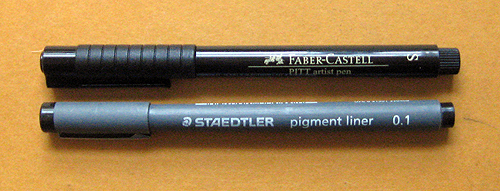


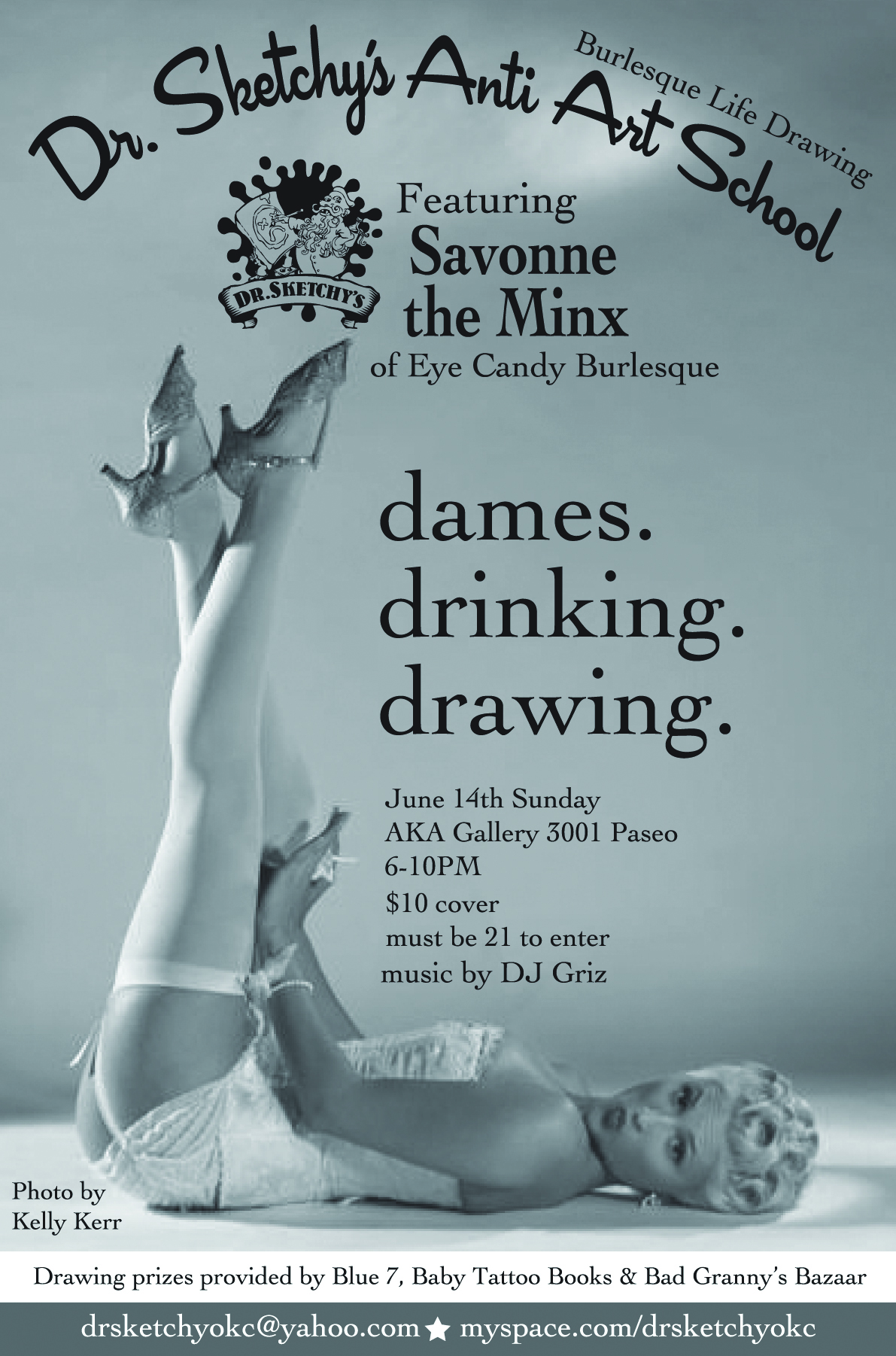 The next
The next 

